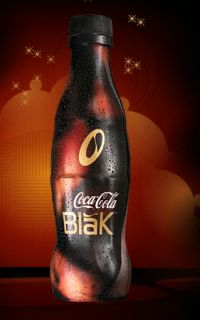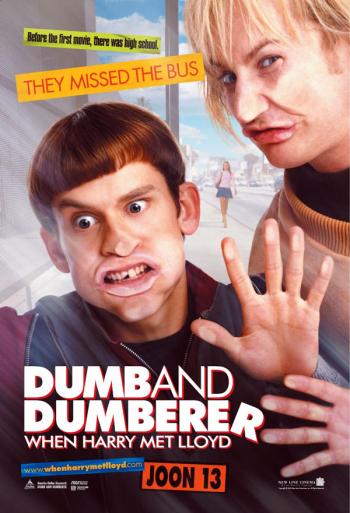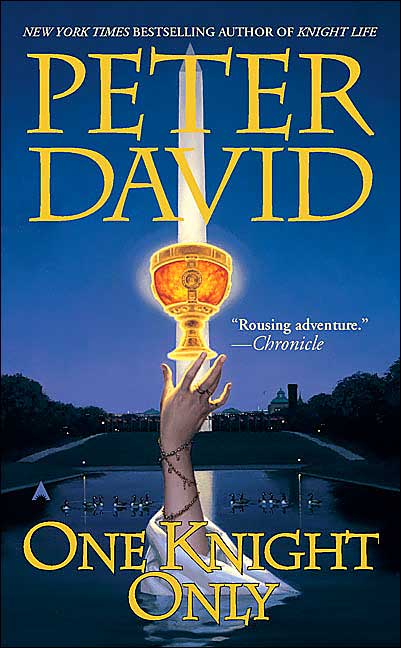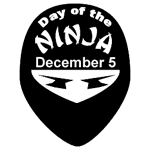 Happy Monday, people! Before I present to you the final engrossing chapter of New Coke, I thought I'd pass along a fun little news article about fried Coke (pictured left). Apparently an enterprising man by the name of Abel Gonzales, Jr. created a recipe that uses Coca-Cola syrup mixed into a funnel cake batter that's deep fried and served with syrup and cherries on top. Wow. Nice. My wife and I always talk about how, in the South, they fry everything, including the Iced Tea. Maybe we should amend that to Coke? A completely Southern idea, fried Coke brings us one step closer to this. Consider me in love.
Happy Monday, people! Before I present to you the final engrossing chapter of New Coke, I thought I'd pass along a fun little news article about fried Coke (pictured left). Apparently an enterprising man by the name of Abel Gonzales, Jr. created a recipe that uses Coca-Cola syrup mixed into a funnel cake batter that's deep fried and served with syrup and cherries on top. Wow. Nice. My wife and I always talk about how, in the South, they fry everything, including the Iced Tea. Maybe we should amend that to Coke? A completely Southern idea, fried Coke brings us one step closer to this. Consider me in love. Anywho, on to the matter at hand. If you missed Part I or Part II of this article just click the appropriate link. Otherwise continue reading and see the exciting conclusion to the New Coke story.
 After the fallout from New Coke’s disastrous introduction, Coke had a big problem. How do they market two Cokes? Coke Classic didn’t need any marketing as the brand now sold itself, but what about New Coke? It could no longer use the slogan “The Best Just Got Better”, so, what to do? Coke decided to market New Coke to their lowest performing demographic, kids and teens. Ads for Coke included Max Headroom in fast talking commercials berating Pepsi for lack of originality. These ads did fairly well and were well recognized, but sales of New Coke couldn’t recover from the beating the drink got over the summer. The writing was on the wall for New Coke.
After the fallout from New Coke’s disastrous introduction, Coke had a big problem. How do they market two Cokes? Coke Classic didn’t need any marketing as the brand now sold itself, but what about New Coke? It could no longer use the slogan “The Best Just Got Better”, so, what to do? Coke decided to market New Coke to their lowest performing demographic, kids and teens. Ads for Coke included Max Headroom in fast talking commercials berating Pepsi for lack of originality. These ads did fairly well and were well recognized, but sales of New Coke couldn’t recover from the beating the drink got over the summer. The writing was on the wall for New Coke.  In 1992, New Coke was re-branded Coke II in hopes that it might refresh interest. It didn’t and by 2002, the drink was pretty much eliminated from all but the smallest markets. Supposedly, Coke II can still be found in stores and vending machines in smaller markets like Micronesia and American Samoa. Though New Coke is considered near dead, it will never truly die. CEO Goizueta still preferred New Coke so he continued to have it produced for his own consumption until right before his death. You only have to mention New Coke to somebody and they immediately know what you are talking about. It’s not just a drink anymore, New Coke refers to a mistake so disastrous, one may never recover. It’s part of the pop culture lexicon.
In 1992, New Coke was re-branded Coke II in hopes that it might refresh interest. It didn’t and by 2002, the drink was pretty much eliminated from all but the smallest markets. Supposedly, Coke II can still be found in stores and vending machines in smaller markets like Micronesia and American Samoa. Though New Coke is considered near dead, it will never truly die. CEO Goizueta still preferred New Coke so he continued to have it produced for his own consumption until right before his death. You only have to mention New Coke to somebody and they immediately know what you are talking about. It’s not just a drink anymore, New Coke refers to a mistake so disastrous, one may never recover. It’s part of the pop culture lexicon.Years after New Coke’s birth and supposed death, urban legends continue to swirl around it. There are people that believe that Coke orchestrated the whole New Coke failure to breathe life back into Coca-Cola’s flagging sales. While the end result may have done just that, I think Coke President Donald Keough said it best when asked about that very scenario. His answer: “We're not that dumb, and we're not that smart”. Well said.
 So, can one still find New Coke on today’s store shelves? While Coke II may be dead, is the formula hidden within another product? Coca-Cola C2, perhaps? Or maybe Coke Zero? While New Coke’s exact formula won’t be found, the closest drink you will find to it is, in fact, Diet Coke. Take a look at the Diet Coke can as it’s very similar to the New Coke can with the red/silver colors reversed. Diet Coke is marketed as Coke while other drinks are marketed as Coca-Cola. New Coke was actually derived from Diet Coke’s formula. As mentioned earlier, Diet Coke is not really a diet version of Coca-Cola Classic as its formula is completely different. Diet Coke could be renamed Diet New Coke, or Diet Coke II. The true diet versions of Coca-Cola Classic are Coca-Cola C2 and Coca-Cola Zero.
So, can one still find New Coke on today’s store shelves? While Coke II may be dead, is the formula hidden within another product? Coca-Cola C2, perhaps? Or maybe Coke Zero? While New Coke’s exact formula won’t be found, the closest drink you will find to it is, in fact, Diet Coke. Take a look at the Diet Coke can as it’s very similar to the New Coke can with the red/silver colors reversed. Diet Coke is marketed as Coke while other drinks are marketed as Coca-Cola. New Coke was actually derived from Diet Coke’s formula. As mentioned earlier, Diet Coke is not really a diet version of Coca-Cola Classic as its formula is completely different. Diet Coke could be renamed Diet New Coke, or Diet Coke II. The true diet versions of Coca-Cola Classic are Coca-Cola C2 and Coca-Cola Zero.  As for me, what do I prefer? To be perfectly honest, I am a Pepsi drinker. My favorite soda is Diet Pepsi. I prefer Pepsi to Coke Classic and I don’t really even like Diet Coke (though I’ve recently started drinking it). When this whole New Coke fiasco went down, I was 11 years old. I remember my dad and I preferred the taste of New Coke to the original (as we were Pepsi drinkers so we liked the sweeter taste). I remember buying the 2 liters of New Coke and getting strange looks from people. EVERYONE in my neighborhood hated it. I can’t remember one person who would admit to liking New Coke at the time. I sure kept it quiet for a while. Now though, I think memories have softened and people would admit it wasn’t the taste they didn’t like, it was the idea of Coke changing the formula at all. They may even admit that they liked the taste of New Coke. Maybe.
As for me, what do I prefer? To be perfectly honest, I am a Pepsi drinker. My favorite soda is Diet Pepsi. I prefer Pepsi to Coke Classic and I don’t really even like Diet Coke (though I’ve recently started drinking it). When this whole New Coke fiasco went down, I was 11 years old. I remember my dad and I preferred the taste of New Coke to the original (as we were Pepsi drinkers so we liked the sweeter taste). I remember buying the 2 liters of New Coke and getting strange looks from people. EVERYONE in my neighborhood hated it. I can’t remember one person who would admit to liking New Coke at the time. I sure kept it quiet for a while. Now though, I think memories have softened and people would admit it wasn’t the taste they didn’t like, it was the idea of Coke changing the formula at all. They may even admit that they liked the taste of New Coke. Maybe.What do you think? I really want to know. Email me or comment on this article and let me know what you thought of New Coke and if your views have changed since then. Till then, drink what you like and like what you drink.
Fun Coke/Pepsi Commercials:
1. New Coke Commercial featuring Max Headroom
2. One of a series of Pepsi commercials from the '90s featuring Hallie Eisenberg and a member of the Sopranos cast
3. This is a Cherry 7-up commercial I remember from the early '90s starring Matt LeBlanc, pre-Friends
4. Another classic 7-up commercial -- Make 7 UP YOURS!!!
 Welcome to Part II of The Saga of New Coke. If you missed Part I, then just
Welcome to Part II of The Saga of New Coke. If you missed Part I, then just  That New Coke was a complete failure from day one is the common misconception. By and large, people really liked the new formulation and continued buying Coke in their usual amounts. Where the discourse began was in the Southeast, where Coke was originally formulated and sold back in the late 1800s. People were reacting to the fact that Coke was changed, not to the bad taste of New Coke. Most of the protestors didn’t even drink soda, much less Coke; they just didn’t like the idea of Coke changing something that apparently meant something to them. The interesting thing is, if Coke, before the change, would have meant enough to these people to buy it, then the company wouldn’t have changed the formula in the first place. It’s your classic Catch-22. Due to the extremely vocal minority, it became “chic” to bash New Coke. Protestors were so vocal about not liking New Coke that anyone who did like the new formula would be scared to say so. These “coke crazies” as I call them, formed a group called Old Cola Drinkers of America which lobbied The Coca Cola Company to reintroduce the original formula. They even tried to levy a class action lawsuit against Coke (wha-huh?!) but the case was thrown out by a judge (sometimes the legal system works). People continued to be so outraged at the new formula that they were trying to obtain cases of original Coca-Cola from overseas as New Coke had not been introduced over there yet. The Coca-Cola Company was at a loss for the huge debacle they had created for themselves.
That New Coke was a complete failure from day one is the common misconception. By and large, people really liked the new formulation and continued buying Coke in their usual amounts. Where the discourse began was in the Southeast, where Coke was originally formulated and sold back in the late 1800s. People were reacting to the fact that Coke was changed, not to the bad taste of New Coke. Most of the protestors didn’t even drink soda, much less Coke; they just didn’t like the idea of Coke changing something that apparently meant something to them. The interesting thing is, if Coke, before the change, would have meant enough to these people to buy it, then the company wouldn’t have changed the formula in the first place. It’s your classic Catch-22. Due to the extremely vocal minority, it became “chic” to bash New Coke. Protestors were so vocal about not liking New Coke that anyone who did like the new formula would be scared to say so. These “coke crazies” as I call them, formed a group called Old Cola Drinkers of America which lobbied The Coca Cola Company to reintroduce the original formula. They even tried to levy a class action lawsuit against Coke (wha-huh?!) but the case was thrown out by a judge (sometimes the legal system works). People continued to be so outraged at the new formula that they were trying to obtain cases of original Coca-Cola from overseas as New Coke had not been introduced over there yet. The Coca-Cola Company was at a loss for the huge debacle they had created for themselves.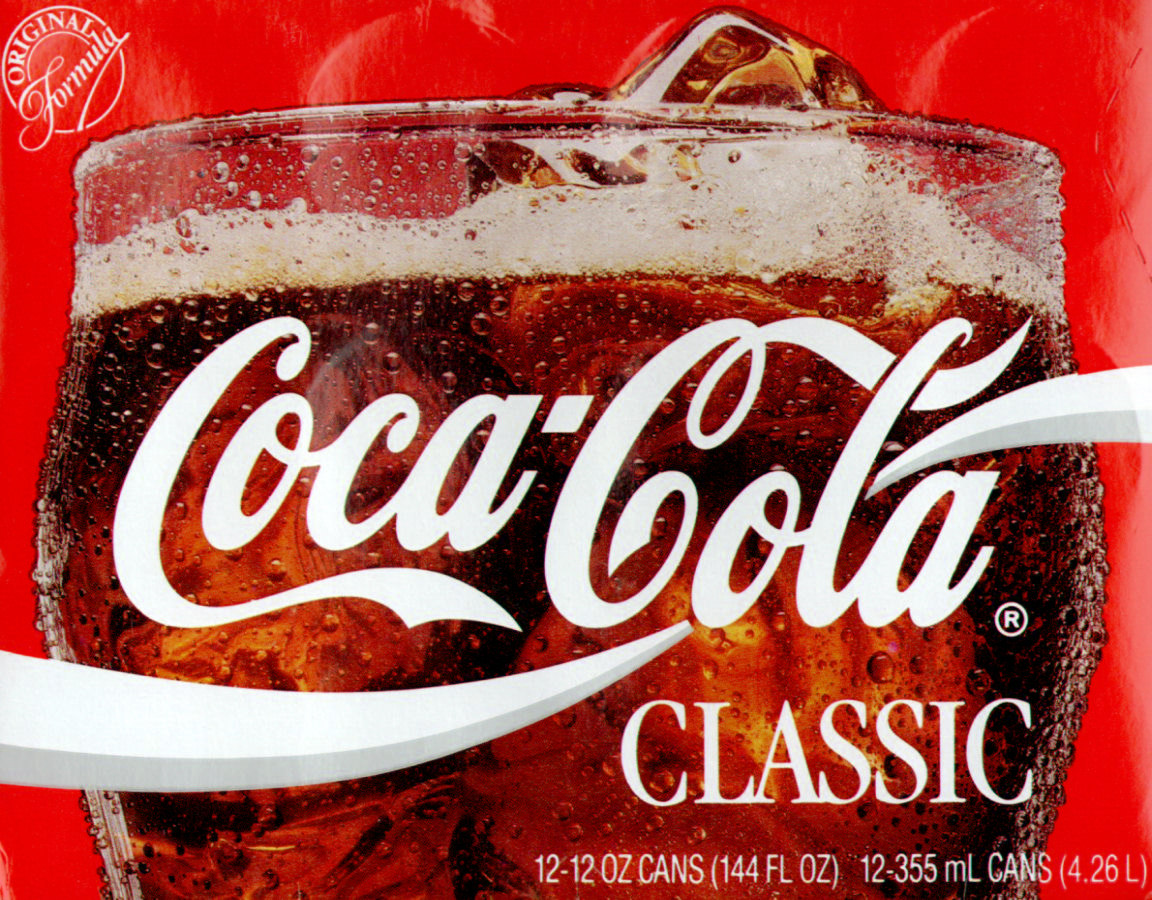 Despite the chaos in the Southeast, sales of New Coke everywhere else were doing very well...at first. After July, however, the sales starting leveling off. Coke executives were scared that peer pressure against New Coke was affecting the sales numbers. What to do? Well, naturally, they panicked and hastily set out to re-introduce the original formula of Coca-Cola. On July 10th, Peter Jennings broke into normal television to inform the world that Coke was bringing back the original flavor of Coke, now dubbed Coca-Cola Classic. The founders of Old Cola Drinkers of America were given the first cases.
Despite the chaos in the Southeast, sales of New Coke everywhere else were doing very well...at first. After July, however, the sales starting leveling off. Coke executives were scared that peer pressure against New Coke was affecting the sales numbers. What to do? Well, naturally, they panicked and hastily set out to re-introduce the original formula of Coca-Cola. On July 10th, Peter Jennings broke into normal television to inform the world that Coke was bringing back the original flavor of Coke, now dubbed Coca-Cola Classic. The founders of Old Cola Drinkers of America were given the first cases.  I love soda. I mean, I REALLY love soda. It’s almost an unnatural love…..a forbidden love, if you will. Due to this, I’ve been fascinated for years by the cola wars between Coke and Pepsi. My formative years were right in the middle of the ‘80s; the Vietnam of the cola wars. During the 1980s, Coke and Pepsi threw out more gimmicks than a used car salesman trying to hawk his wares during a “Sales Event”. It was a soda lovers’ nirvana (and I don’t mean the alternative rock band). One of the more infamous ploys of this period was the introduction of New Coke. Never has a company’s promotion and decision making been so thoroughly bitch-slapped by the American public. It was embarrassing, and, in my opinion, a complete over-reaction. In this three part article, we will look at the saga of New Coke, from inception all the way to the bloody aftermath and what Coke gained or lost by their gamble. I’ll even ponder if New Coke might actually still be on the shelves…but under a different name, and at the end of each article (including this one) I'll provide links to classic Coke and Pepsi commercials. So punch 1983 into the flux capacitor and let’s get this bitch up to 88 miles an hour because our story starts, not with New Coke…………but Diet Coke.
I love soda. I mean, I REALLY love soda. It’s almost an unnatural love…..a forbidden love, if you will. Due to this, I’ve been fascinated for years by the cola wars between Coke and Pepsi. My formative years were right in the middle of the ‘80s; the Vietnam of the cola wars. During the 1980s, Coke and Pepsi threw out more gimmicks than a used car salesman trying to hawk his wares during a “Sales Event”. It was a soda lovers’ nirvana (and I don’t mean the alternative rock band). One of the more infamous ploys of this period was the introduction of New Coke. Never has a company’s promotion and decision making been so thoroughly bitch-slapped by the American public. It was embarrassing, and, in my opinion, a complete over-reaction. In this three part article, we will look at the saga of New Coke, from inception all the way to the bloody aftermath and what Coke gained or lost by their gamble. I’ll even ponder if New Coke might actually still be on the shelves…but under a different name, and at the end of each article (including this one) I'll provide links to classic Coke and Pepsi commercials. So punch 1983 into the flux capacitor and let’s get this bitch up to 88 miles an hour because our story starts, not with New Coke…………but Diet Coke. In 1980 Roberto Goizueta (seen right) took over as CEO of the Coca-Cola Company. He let it be known that all traditions are “out the window” and it was time for Coke to “shake things up”. Seeing the success of Diet Pepsi and the relative obscurity of TaB, Goizueta used the market research mentioned earlier and decided to reformulate TaB using similar artificial sweeteners (i.e. aspartame) found in Diet Pepsi. Thus, the end product was formulated to be very similar to Diet Pepsi, and not really a diet version of Coca-Cola. Against company tradition the resulting product was branded as Diet Coca-Cola and released in 1983. Over the next few years, Diet Coke would outsell all of Coke’s other products by a wide margin. Not helping things, Pepsi’s enormously popular
In 1980 Roberto Goizueta (seen right) took over as CEO of the Coca-Cola Company. He let it be known that all traditions are “out the window” and it was time for Coke to “shake things up”. Seeing the success of Diet Pepsi and the relative obscurity of TaB, Goizueta used the market research mentioned earlier and decided to reformulate TaB using similar artificial sweeteners (i.e. aspartame) found in Diet Pepsi. Thus, the end product was formulated to be very similar to Diet Pepsi, and not really a diet version of Coca-Cola. Against company tradition the resulting product was branded as Diet Coca-Cola and released in 1983. Over the next few years, Diet Coke would outsell all of Coke’s other products by a wide margin. Not helping things, Pepsi’s enormously popular  With Diet Coke siphoning sales from other Coke products and the Pepsi Challenge causing the buying public to lose faith in the Coke brand, CEO Roberto Goizueta thought it was time for more drastic measures. Having quietly tweaked Coke’s formula before in foreign markets to help drive up sales, Roberto had little qualms about altering the secret formula for Coca-Cola Proper here in the States. He believed the flavor change should be done with a huge marketing campaign and not kept secret from the public. So preparations were made to re-formulate Coca-Cola’s flavor to be more like Diet Coke and completely eliminate the current Coke product. After extensive formula research and market testing Coke finally stumbled on a concoction that tested through the roof with focus groups. The newer formula even bested Pepsi and Diet Pepsi in taste trials. It looked as though Coke had a winner. Goizueta had his marketing department work in absolute secrecy on a campaign, even going so far as having them work in another building after hours so nothing would leak to the press. The Coca-Cola Company planned on unveiling the new formula during their centennial year, 1985.
With Diet Coke siphoning sales from other Coke products and the Pepsi Challenge causing the buying public to lose faith in the Coke brand, CEO Roberto Goizueta thought it was time for more drastic measures. Having quietly tweaked Coke’s formula before in foreign markets to help drive up sales, Roberto had little qualms about altering the secret formula for Coca-Cola Proper here in the States. He believed the flavor change should be done with a huge marketing campaign and not kept secret from the public. So preparations were made to re-formulate Coca-Cola’s flavor to be more like Diet Coke and completely eliminate the current Coke product. After extensive formula research and market testing Coke finally stumbled on a concoction that tested through the roof with focus groups. The newer formula even bested Pepsi and Diet Pepsi in taste trials. It looked as though Coke had a winner. Goizueta had his marketing department work in absolute secrecy on a campaign, even going so far as having them work in another building after hours so nothing would leak to the press. The Coca-Cola Company planned on unveiling the new formula during their centennial year, 1985.
